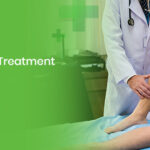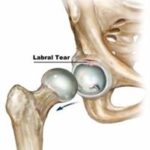Rehabilitation
We understand how tough life feels after an injury, surgery, or illness. Even small daily things become hard, and sometimes you may feel low or tired. You are not alone. Our rehabilitation centre in Dwarka and physiotherapy clinic in Dwarka are here to support you with care and patience. We know every person heals at their own pace, and we’re here to walk that path with you.
If you’re searching for a caring physiotherapist in Delhi or a trusted rehabilitation centre in Delhi, we are just a call away. We’ll help you slowly bring back your strength, movement, and confidence step by step, with full heart. Together, we’ll make each day a little better.
Rehabilitation is defined as the combined and coordinated use of medical, social, educational, and vocational measures for training and retraining an individual to the highest level of functional activities.
Objectives of Rehabilitation
- Provision of appropriate medical facilities and treatment as early as possible.
- Provision of suitable education for the children and disabled.
- Assistance in achieving and maintaining a state of good mental health, including a positive psychological attitude towards the handicapped in society.
- Education of the general public regarding the needs and worth of handicapped persons.
- Giving vocational assistance in relation to the extent of disability.
Some other objectives are –
- To eliminate disability
- To reduce or remove disability to the greatest extent
- To retrain the person with residual physical abilities and build his capabilities.
Principal of Rehabilitation:
- It should be started at the earliest time in order to ensure the best result
- To be administered in conjunction with specific medical and surgical treatment, specific for a disability.
- To give attention and listen to patients carefully.
- Building up the patient to the highest possible level of functional activity.
- Knowing the socio-economic standard of the disabled and
- Training and retraining in a particular task (job-oriented)
Levels of Prevention
The primary level of prevention:
These are the actions taken to reduce the occurrence of impairment.
- Vaccination and immunization
- Sanitation and safe water
- Health education
- Proper nutrition
- Awareness
Secondary level of prevention:
It is the control of or limiting the consequences of impairment once it has occurred.
- Early treatment
- Effective drug therapy
- Correction of deformity
Tertiary level of prevention:
Here the treatment aims at preventing the occurrence from becoming handicapped.
- Therapeutic measures are provided by physiotherapists, occupational therapists, and speech therapists.
- Training in self-care activities i.e. ADL’s.
- Providing technical aids i.e. orthoses and prosthesis.
- Social and vocational confidence
- Providing education and suitable job for the handicap
- Education for improving the attitude of the family toward the patient
Rehabilitation Team
Rehabilitation team comprises of –
- Physiatrist – a trained physician in the field of physical medicine and rehabilitation (PMR).
- Physiotherapist
- Occupational therapist
- Speech therapist
- Clinical Psychologist
- Rehab nurse
- Prosthetist and orthotist
- Social worker
- Vocational counsellor and
- Recreational therapist

Physiotherapy
The role of physiotherapist as a member of rehabilitation team is –
- Evaluation and assessment of range of motion and strength,
- Restoration of movement and strength,
- Use to superficial and deep physical agents (modalities),
- Work on balance, coordination, transfer techniques, gait and ambulation,
- Training and research and
- Creation of a barrier free environment for the patient.
REHABILITATION CENTRES/ INSTITUTES IN INDIA
- National institute for visually handicap, NIVH (Dehradun)
- National institute for hearing handicap, NIHH (Bombay)
- National institute for mentally handicap, NIMH (Sikandrabad)
- Institute for physically handicapped, IPH (New Delhi)
- National institute for mental health and neurosciences, NIMHNS (Bangalore)
- National institute for rehabilitation training and research, NIRTAR (Cuttack)
- National institute of orthopedically handicapped, NIOH (Calcutta)






